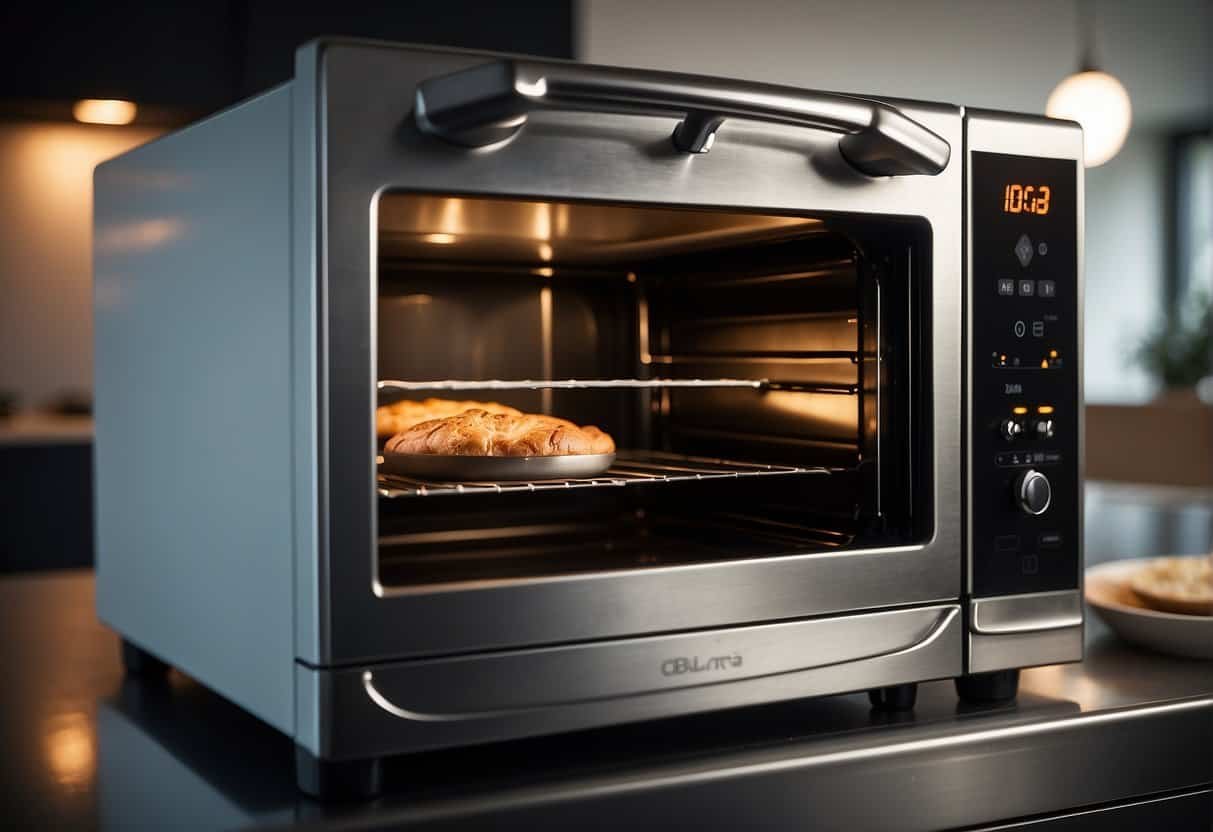When it comes to kitchen conveniences, the self-cleaning oven feature is certainly compelling. It promises to eliminate the need for scrubbing by heating the oven to a high temperature and turning food residue into ash, which can be easily wiped away.
Table of Contents
However, as someone who is cautious in the kitchen, I always wonder about the safety of leaving a self-cleaning oven unattended. The intense heat necessary for the cleaning cycle raises questions about potential risks such as fire hazards or emission of fumes.

Scrutinizing the safety of self-cleaning ovens requires understanding how they work. When engaged, the cleaning cycle locks the oven door and heats the interior to temperatures that can reach upwards of 900 degrees Fahrenheit.
This is hot enough to incinerate any food particles and spills left inside the oven. While manufacturers design these ovens to handle such extreme conditions, I recognize the importance of following the recommended safety precautions to ensure everything operates smoothly.
Safety Precautions if Leaving the Oven Unattended
I always check that my kitchen is well-ventilated by opening windows or turning on the exhaust fan to disperse any fumes. Since the oven reaches extreme temperatures, it’s crucial to make sure the oven door locks properly to prevent accidental burns.
I also confirm the oven cavity is empty and that there are no large pieces of food residue that could cause smoke or fire.
- Ventilation: Open windows or use an exhaust fan
- Oven door: Verify lock function to prevent accidents
- Oven cavity: Ensure it’s cleared of food and flammable materials
Removing Oven Contents
Before I lock the door and start the cycle, I remove all oven racks and any other items from the oven. This prevents potential warping of the racks due to high heat and ensures that any oven cleaner used prior to the self-cleaning doesn’t emit harmful fumes.
- Oven racks: Removed to protect from warping
- Oven cleaner: If applied earlier, ensure it’s completely rinsed off to avoid fumes
Risks and Considerations
I’ll be going over some of the risks and important safety considerations to keep in mind when using your oven’s self-clean feature, focusing specifically on the well-being of pets, overall home safety, health concerns related to chemical exposure, and the potential for appliance malfunction.
Pets and Home Safety
Pets: My first concern involves the animals in the home. During the self-cleaning process, it’s possible for ovens to emit smoke and toxic fumes that can be harmful to pets, as their respiratory systems are more sensitive.
It is important to ensure that the room is well-ventilated, even if this means opening windows or using an exhaust fan.
Home Safety: I need to emphasize home safety, too. There’s a risk of fire hazards from residue or bits of plastic that may ignite at high temperatures.
Plus, ensuring that a functioning carbon monoxide detector is installed is a critical precaution, as carbon monoxide can be a byproduct of any appliance that heats up.
Health and Chemical Concerns
Toxic Fumes: The high temperatures used during the self-cleaning cycle can produce smoke and fumes from the burning residue inside the oven. These chemicals released into the air could be a concern for individuals with respiratory issues or allergies.
It’s equally important for me to maintain proper ventilation throughout the cleaning cycle.
Chemical Residue: I also consider the potential for chemical residue from previously used oven cleaners. If these aren’t completely removed before starting the self-clean cycle, they might decompose at high temperatures, producing potentially toxic fumes.
Potential Malfunctions
Finally, I take into account the potential malfunctions. Self-cleaning cycles generate extreme temperatures, which can sometimes lead to blown fuses or damaged components inside my oven.
If I notice any unusual behavior or error messages, I should turn off the cycle immediately and consult the manufacturer or a professional technician. It’s better to be proactive than to overlook something that could become unsafe.
Alternatives to Leaving the Self-Cleaning Oven Alone

When maintaining the cleanliness of our ovens, self-cleaning is not the only option available. I’ll explore manual cleaning techniques and professional cleaning services that can keep your oven in top condition without resorting to the high temperatures of self-cleaning cycles.
Manual Cleaning Options
Baking Soda and Vinegar: This is a classic, natural cleaning solution. To clean my oven manually, I often mix a paste of baking soda and water, apply it to the oven interior, and let it sit overnight.
The next day, I’ll spray vinegar over the baking soda to create a foaming action, which helps in lifting grime and grease.
Commercial Oven Cleaners: For tougher jobs, commercial oven cleaners can be effective. However, it’s important to use them with caution due to their chemical content. I make sure to follow the manufacturer’s instructions and ventilate the area well to avoid inhaling any fumes.
Professional Cleaning Services
When manual labor isn’t appealing or I’m dealing with persistent grime, professional cleaning services can be a smart choice.
These services employ trained individuals who use specialized tools and cleaning solutions to effectively clean my oven without the risks associated with high-heat self-cleaning cycles.
It saves me time and often produces excellent results, though I always vet the service provider to ensure they use safe and effective methods. This is one way to be able to get a clean oven whilst leaving it alone!










